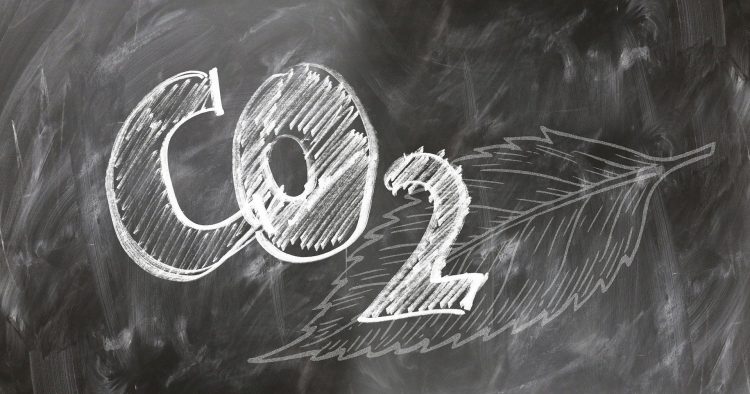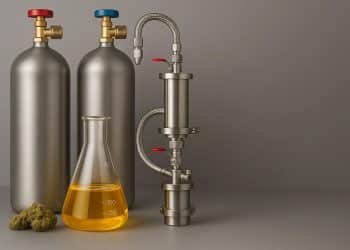Delta-9-tetrahydrocannabinol (THC) and cannabidiol (CBD) do not occur in large amounts in raw cannabis — these neutral forms must be decarboxylated from their acidic precursors, tetrahydrocannabinolic acid (THCA) and cannabidiolic acid (CBDA), respectively. Both neutral and acidic forms are soluble in supercritical carbon dioxide (sCO2). In 2019, an experiment published in the Journal of CO2 Utilization explored two supercritical carbon dioxide (sCO2) extraction strategies to determine yields of neutral cannabinoids. [1]
The first method involved conventional decarboxylation. Researchers decarboxylated cannabis with oven heat (air circulation) for 30 minutes at 140° C. They then employed pure sCO2 extraction at varying temperatures (50, 60, and 70° C) and pressures. The two cultivars for the experiment were Girl Scout Cookies (GSC) from The Cali Connection and a balanced THC-CBD cultivar, Durga Mata II CBD (DMII) from Paradise Seeds. Based on prior research indicating higher solubility of CBD, researchers chose lower pressures for the DMII chemovar (12.8, 18.4 and 24.0 MPa) compared to the GSC chemovar (16.5, 20.7 and 24.9 MPa).
The second method skipped the decarboxylation step. Instead, researchers sent cannabis samples directly to sCO2 extraction but added 6% ethanol as a cosolvent. For GSC, they used 50° C and 16.5 MPa; for DMII, they utilized 50° C and 24.0 MPa.
The crude extracts from both strategies were winterized using hexane at -80° C; although this removed waxes, it did not significantly alter chemical composition. The study authors quantified cannabinoids using high-performance liquid chromatography and photodiode array detection.
Not surprisingly, decarboxylation “potentiated the CBD and Δ9‐THC content of flower samples by 5 to 10-fold.” Acidic cannabinoids were converted to neutral forms at much lower levels without decarboxylation even with ethanol as a co-solvent. A quick comparison of crude extracts illustrates the point: with DMII, strategy 1 resulted in almost 34% neutral CBD, but strategy 2 produced only about 5% neutral CBD. With GSC, strategy 1 produced about 88% neutral THC, but strategy 2 resulted in roughly 13% neutral THC.
Nonetheless, strategy 2 revealed its own benefits. Mass yields approached 30% and were consistently higher than the yields from strategy 1 (which were as low as 6% and as high as 24% depending on cultivar, temperature, and pressure). Furthermore, the researchers were able to quantify the presence of essential oil terpenes in strategy 2 but not in strategy 1 since sufficient heat (e.g., that used in decarboxylation) evaporates terpenessCO2 caused some terpene loss compared to fresh flower oil.
This investigation does not prove that one method is superior to the other, but it does call attention to two very different (and viable) approaches to supercritical CO2 extraction. Overall, the researchers concluded that “The essential oils could be maintained in supercritical extracts from non-decarboxylated flowers, but the acid cannabinoids were not significantly
converted to neutral using this process with co-solvent. Although the process presented a higher [mass] yield of extracts, the use was not efficient to extract the neutral cannabinoids of medicinal interest (CBD and Δ9-THC).” [1] Ultimately, the extractor’s needs and goals determine the most desirable strategy, and decarboxylation can always be endeavored after generating crude oils rich in THCA and/or CBDA.
Reference
- Grijó DR, et al. “Supercritical Extraction Strategies Using CO2 and Ethanol to Obtain Cannabinoid Compounds from Cannabis Hybrid Flowers.” Journal of CO₂ Utilization,30, 2019, pp.241–248. Journal Impact Factor = 5.189, Times Cited = N/A












